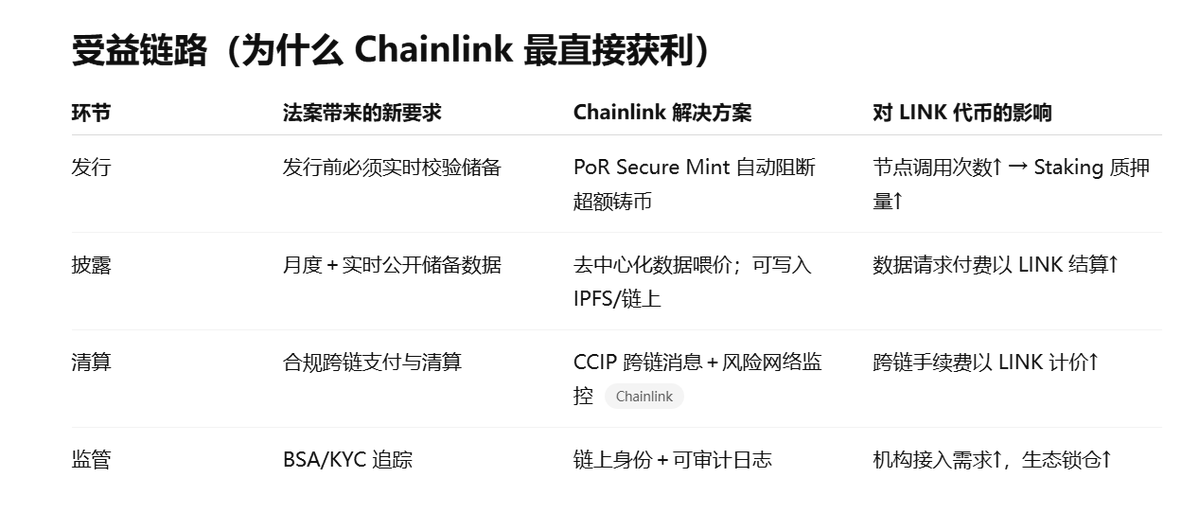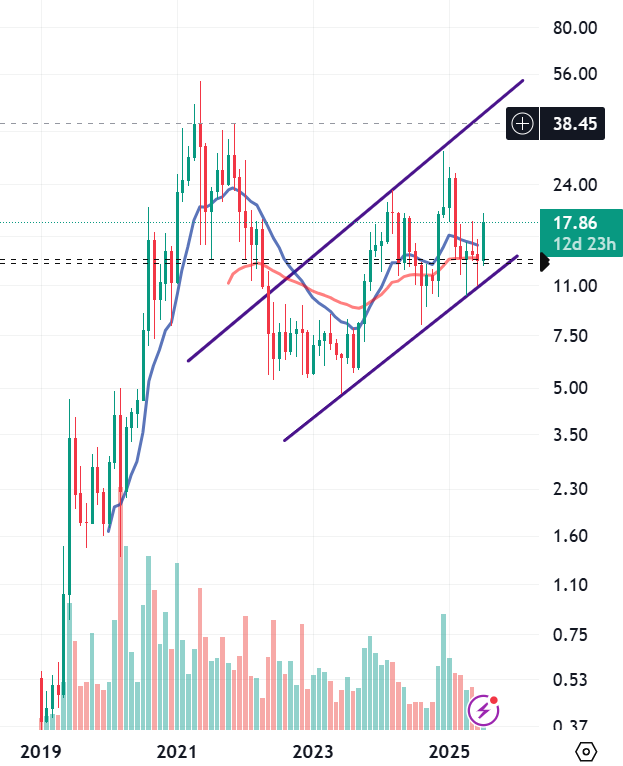The Historical Opportunities of $LINK - GENIUS Act
The GENIUS Act incorporates requirements such as 1:1 high liquidity reserves, monthly transparent disclosures, AML/KYC, freezing, and cross-chain traceability into federal law, meaning that any compliant stablecoin must connect to on-chain reserve verification + cross-chain communication + compliant identity infrastructure.
Web3 projects that position themselves in key areas such as oracle services, cross-chain interoperability, compliant identity, and native settlement networks for stablecoins will directly benefit from the significant market opportunities brought about by regulatory-driven demand.
GENIUS has enshrined transparency, real-time capabilities, and cross-chain compliance into law. Chainlink $LINK happens to lead in these three areas and has already established deep collaborations with mainstream stablecoins and financial institutions. As the U.S. market experiences an explosion of compliant stablecoins, issuers will almost inevitably rely on Chainlink's Proof of Reserve (PoR) and Cross-Chain Interoperability Protocol (CCIP) to quickly meet regulatory requirements, naturally increasing the demand for LINK as network fuel and staking asset.
The GENIUS Act sets rigid compliance requirements for payment stablecoins, including 1:1 high liquidity reserves, monthly public disclosures, and annual audits, while clearly defining their cross-chain circulation and anti-money laundering obligations. These provisions inherently require real-time reserve verification (Proof of Reserve) + compliant cross-chain communication (CCIP) infrastructure, which aligns perfectly with Chainlink's existing products. Therefore, the stricter the new regulations, the more compliant issuers there are, and the stronger the demand for Chainlink oracles and the $LINK token.
After the bill is passed, JPMorgan, Bank of America, and others are considering issuing their own stablecoins. If just five large banks issue stablecoins, each with an average daily settlement of $10 billion, the demand for PoR requests and cross-chain calls could expand by several times. The barriers to on-chain compliance infrastructure are high, and competitors are few. Chainlink has already validated its solutions with pilot programs at SWIFT, ANZ, DTCC, etc., creating a wide moat.
The monthly chart for $LINK is still in an upward channel, with a chance to return to the previous high of around $38 in the second half of the year, and then potentially breaking through $80 or even $120 by 2026.
nfa.
Show original

19.33K
19
The content on this page is provided by third parties. Unless otherwise stated, OKX is not the author of the cited article(s) and does not claim any copyright in the materials. The content is provided for informational purposes only and does not represent the views of OKX. It is not intended to be an endorsement of any kind and should not be considered investment advice or a solicitation to buy or sell digital assets. To the extent generative AI is utilized to provide summaries or other information, such AI generated content may be inaccurate or inconsistent. Please read the linked article for more details and information. OKX is not responsible for content hosted on third party sites. Digital asset holdings, including stablecoins and NFTs, involve a high degree of risk and can fluctuate greatly. You should carefully consider whether trading or holding digital assets is suitable for you in light of your financial condition.

